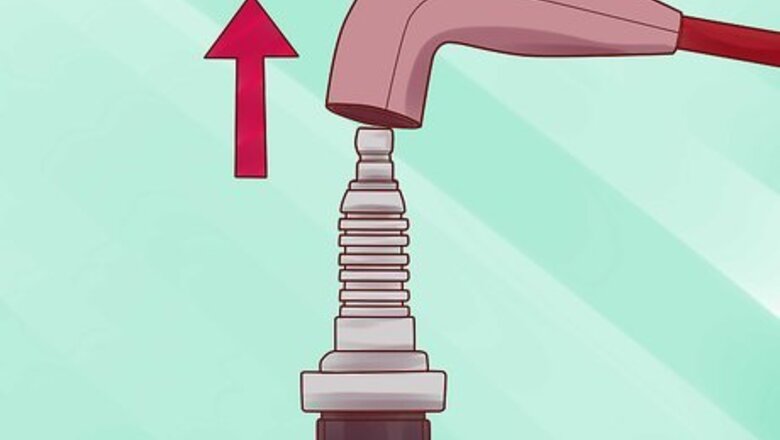
views
Preparing the Blades for Sharpening
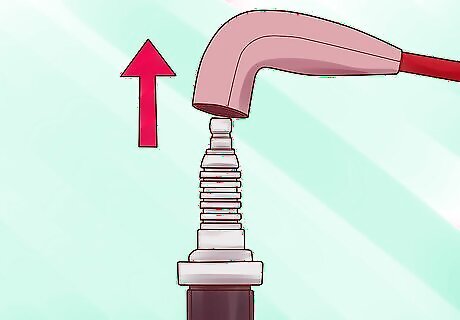
Disconnect the spark plug and power source. A lawnmower can cause serious injury if it starts while you are working on it. Always disconnect the spark plug and the power source (outlet or battery) before disassembling your mower. The spark plug can usually be disconnected by removing a prominent wire on the side or front of the lawnmower engine from its metal mounting. Once disconnected, the engine should not be able to start. For safety purposes, it's still recommended to wear heavy gloves and eye protection during this project even if you're sure you've disconnected the spark plug.
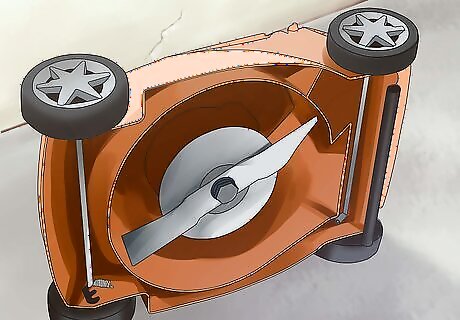
Turn the mower on its side with its carburetor facing up. To access the Lawn Mower blades, you must turn it on its side. However, because of the construction of a lawn mower engine, turning the mower over haphazardly can cause engine oil to spill into the carburetor and air filter. To avoid this, make sure you turn the mower so that these face up, rather than down. The carburetor and air filter on most modern mowers are usually housed in a boxy plastic case on the side of the engine. If you're unsure of where these parts are located on your mower, consult your owner's manual or contact your manufacturer. As additional protection against spilling, you can run the mower until it's out of gas, or pour the oil into a separate container. This project is also a good opportunity to check your oil and change it if necessary. It's a good idea to change your oil at least once a year.
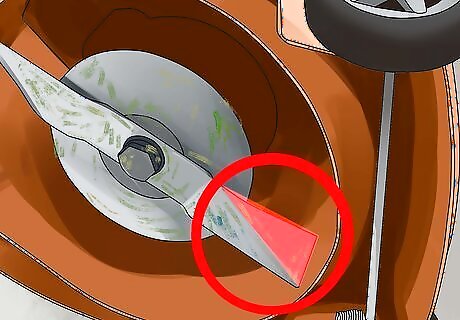
Mark the downward-facing side of the blade. One of the most common mistakes homeowners make when sharpening their lawnmower blade is to re-install it upside-down. If this happens, the blade won't be able to cut grass, no matter how sharp it is. To avoid the extra effort of having to remove and install the blade again, make a noticeable marking on the bottom side of the blade before removing it. There are many ways to do this. For instance, you may want to mark the bottom of the blade with a dot of spray paint, inscribe your initials with a grease pen, or simply stick some masking tape to the center of the blade.
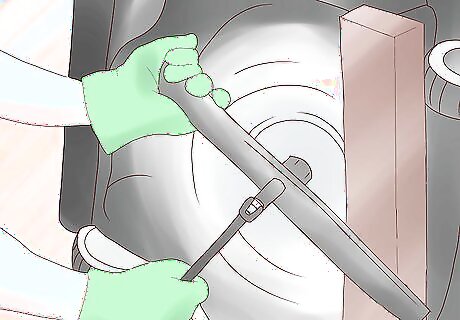
Block the blade and loosen the fastening bolt. Most lawnmower blades are secured with a bolt in the center of the blade. Normally, it's difficult to remove the bolt with a wrench or ratchet because the blade will turn with the tool. For this reason, it's usually necessary to immobilize the blade before you start unscrewing the bolt. There are many ways to do this. Usually, it's easiest to wedge a sturdy block of wood between the blade and deck of the mower to keep the blade steady while you loosen the nut or bolt. You can also use a vise or clamp if it's more convenient. Some mowers have a reverse threaded nut holding the blade onto the spindle. Take note of the placement and orientation of any spacer washers or plates that come off with blade.
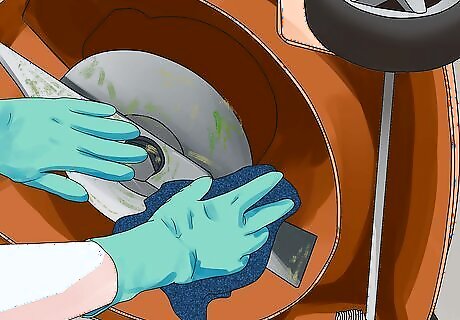
Clean the blade of grass clippings and rust. Once the blade is blocked, it shouldn't be hard loosen the bolt and remove the blade. Once you do, take the opportunity to clean it — if you've been using the mower frequently, there's a good chance it will be dirty with grass clippings, grime, and so on. For ordinary cleaning needs, all you'll usually need is a gloved hand or a dry rag. However, if it's been a long time since you've cleaned your lawnmower, you may find it necessary to use a hose and a little soapy water to remove accumulated plant material and grime. If you do, dry the blade with a rag once you finish.
Sharpening Your Blade
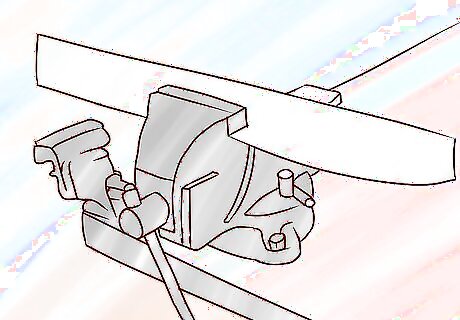
Clamp the blade securely at your work station. Using a vise or a sturdy clamp, secure your lawnmower's blade in a way and place that makes it convenient for you to work on it. For instance, you may want to secure it so that the blade sticks out over the edge of your workbench at roughly waist-level so that you can work on it while sitting. You may want to lay down a few pieces of old newspaper before you begin working to catch stray metal filings, making for easier cleanup.
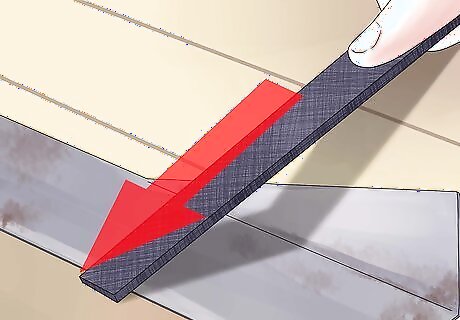
Sharpen the blade with a file. Run a metal file along the cutting edge of the blade. Stroke from the inside edge of the blade to the outside edge until a clean shiny, edge is apparent. Flip the blade over and repeat the process on the other edge. The amount of dust you'll produce from filing your lawnmower blades by hand is likely going to be fairly small compared to what you might generate from other projects. However, it's still a smart idea to wear a standard face mask or respirator to protect your lungs from airborne dust and metal particles as you would for larger grinding projects.
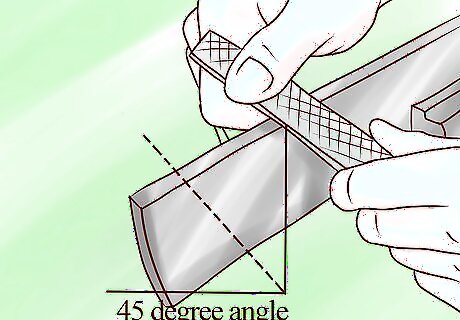
Follow the angle of the factory bevel as you sharpen. Keep the file at the angle of the bevel of the blade as you sharpen. Often, the blade angle is about 40 or 45 degrees, but this is not always the case, so check manufacturer's information for the exact angle. Ideally, when you're finished, the blade should be roughly as sharp as a butter knife. Lawnmower blades don't have to be razor-sharp – they spin fast enough to cut the grass without this level of sharpness.
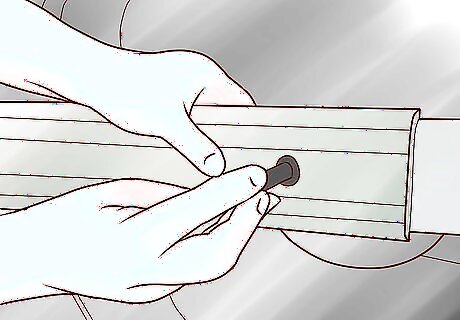
Reinstall the blade when sharpened. Spray some WD-40 (or a similar lubricant/sealant) on the main bolt to ensure that it does not rust, then put the blade back on the mower, followed by any washers, then the bolt. Tighten the bolt. Make sure that the blade is oriented correctly when you mount it (this should be easy if you marked the downward-facing side earlier as directed). The sharp edge should be facing the direction of the spin and/or the direction of the grass catcher portal. Do not use a hammer to make the bolt tighter. A snug fit with a wrench or rachet is usually all you need. You should be able to feel the tightness of the bolt by simply turning the wrench.

Observe common-sense safety precautions while working. If you aren't already wearing eye protection, gloves, and long sleeves, put these on before beginning. Bench grinders and other sharpening machines can fling sparks and tiny pieces of debris at very high speeds, potentially causing injury if you're not wearing proper protection.
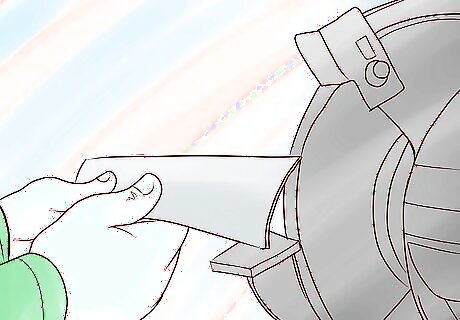
Use a bench grinder. If you don't want to sharpen your blade by hand with a file or there are minor dents or cracks in the blade, using a mechanical solution may be necessary. For sharpening lawnmower blades, ordinary bench grinders usually work well. To sharpen the blade, move it back and forth against the wheel of the grinder. As when filing by hand, you'll want to maintain the original angle of the blade's bevel as you sharpen it. You can also use a 4½ inch (11.4 cm) hand grinder with a metal wheel.
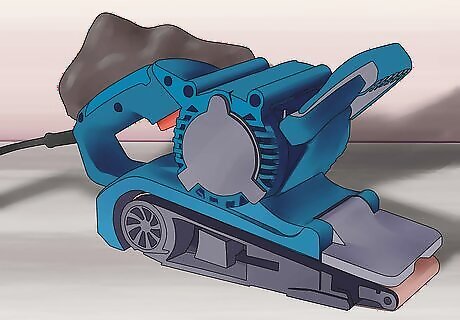
Alternatively, use a belt sander. Another way to sharpen a lawnmower blade is to use a belt sander. The same basic principle applies here: rub the blade at an angle against the abrasive sandpaper to gradually sharpen it through friction To use your belt sander to sharpen the blade, invert it so that the belt is facing up and lock the trigger switch in the "on" position.
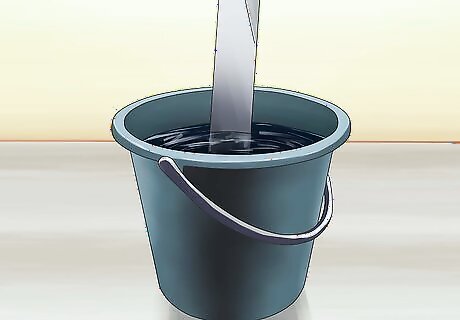
Quench the blade to prevent overheating. The intense friction that results from sharpening a lawnmower blade with a machine can cause the blade to get very hot. This high heat can cause the blade to warp or weaken even as it becomes sharper. To prevent this, it's important to quench the blade frequently as it's being sharpened. To quench the blade, keep a bucket full of water near your workbench as you work on it. As the blade heats up, dip it in the water to quench it and cool it down. Wipe the blade dry before beginning to sharpen it again.
Performing Long-Term Maintenance
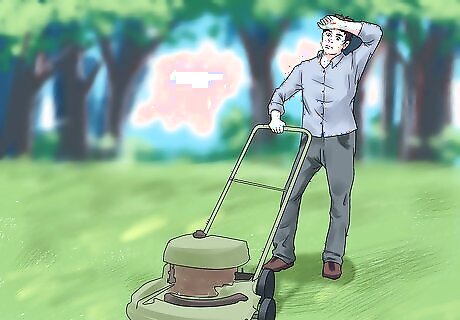
Re-sharpen about twice every mowing season. Regularly sharpening your lawnmower blades is a great habit to get in. With frequent use, it's usually appropriate to sharpen a lawnmower's blades about twice every mowing season — more if you use it frequently. Keep an eye on your grass after you use your mower to cut it. If the grass has a clean, smooth edge, your blades are sharp. If the grass is frayed or torn, your blades are probably too dull and should be sharpened.
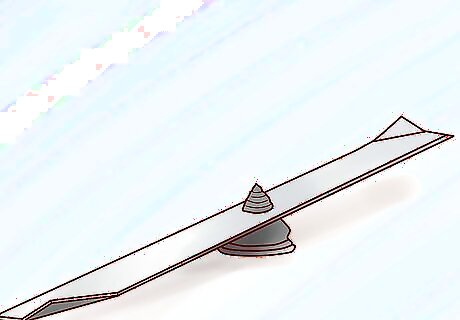
Balance the blade regularly. If the lawnmower's blade isn't properly balanced, it can cause the mower to vibrate as it spins or even damage its internal parts. It's convenient to balance the blade when it's removed for sharpening, so you may want to do so after each sharpening. One way to do this is with a special device called a balancer, which can usually be found at gardening centers or hardware stores. If you do not have a balancer, it's still possible to balance the blade. Place the blade on a wooden dowel. If one side tilts higher than the other, file the opposite side of the blade, then test the balance again until the blade lies flat.
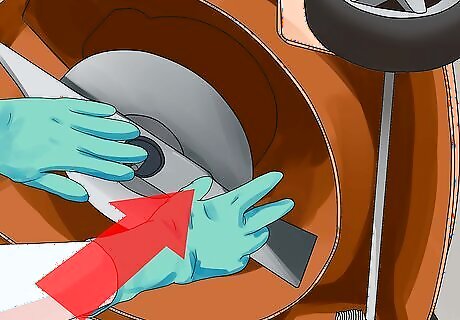
Replace blades with deep dents or cracks. While sharpening your blade is a great way to get it in good shape after ordinary wear and tear, some blades are beyond repair. If your blade is bent, deeply worn, dented, or cracked, sharpening won't be able to fix these problems. In these cases, replacement is usually the quickest, easiest option.

When in doubt, see a mechanic. If any part of the sharpening or balancing process seems difficult, unsafe, or beyond your level of maintenance skill, don't risk damaging your blades or hurting yourself. Instead, enlist the help of a lawnmower repair expert. Nearly any lawnmower repairman will be able to sharpen and balance a set of lawnmower blades fairly quickly and at a reasonable price. As an example of the amount of money you might expect to spend at a lawnmower repair shop, some locations charge as little as $10-15 per sharpening.



















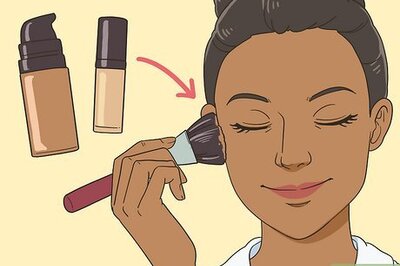
Comments
0 comment